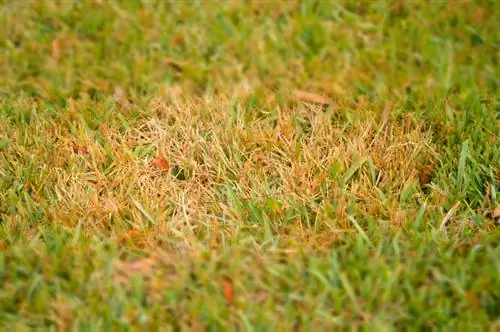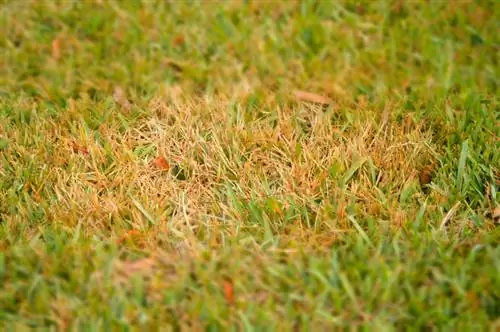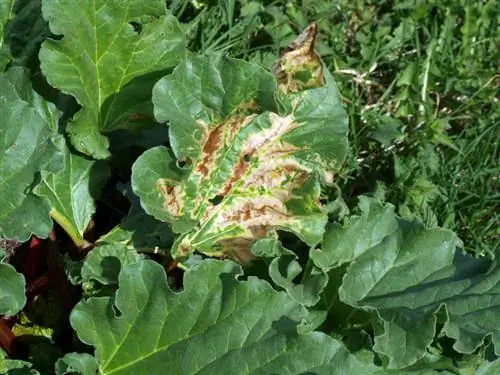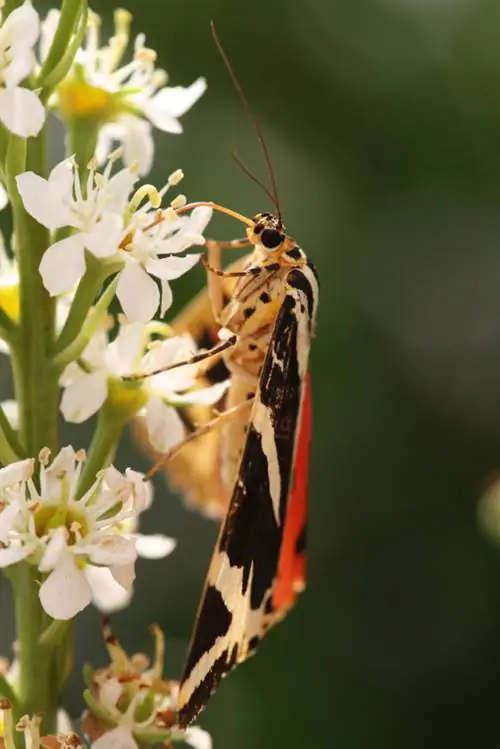- Author admin [email protected].
- Public 2023-12-16 16:46.
- Last modified 2025-01-23 11:20.
Lawns can become susceptible to fungal diseases for various reasons. Common reasons for fungal infestation are poor drainage (i.e. the air can no longer circulate adequately), excessive moisture and/or incorrect nutrient content or pH value of the soil. In addition, some grasses are more sensitive than others, for which rainy weather is sometimes enough.

What are the causes of fungal diseases in lawns?
Lawn diseases caused by fungi usually arise from poor ventilation, high moisture or incorrect nutrient content in the soil. Common fungal diseases include snow mold, red mold, dollar spot, brown patch, witch rings or slime mold. Good lawn care, regular scarifying, aerating and appropriate fertilization can prevent this.
Reasons for fungal infestation and what you can do about it
Most fungal diseases occur when there is poor ventilation and high humidity. However, you can reduce the risk by regularly scarifying the lawn to prevent or remove thatch. Air circulation can also be improved by cutting overhanging trees. Use a lawn crop or a thin bamboo stick to remove excess moisture from the stalks (especially in the morning!), while aerating loosens compacted soil and allows air to reach the roots.
Mow and clear the lawn regularly
Mowing regularly keeps the grass he althy and strong, although you should clean up the clippings. This measure prevents the accumulation and thus spread of fungal spores, which thrive in the typically moist environment of mulch material. In the fall, you should also not fertilize with too much nitrogen. This would promote excessive growth, which in turn is susceptible to snow mold, rust and other fungal diseases.
Which fungal diseases occur in lawns?
Snow mold
The fungal disease caused by various fungal pathogens usually occurs in the cold season, especially after rapid falls. Yellow or brown spots appear in the lawn that have a reddish-brown edge and are sometimes covered with a cobweb-like white coating. The risk of disease is reduced by regular scarifying and moderate nitrogen fertilization.
Red sparkling
Red spray is caused by the fungus Laetisaria fuciformis and is shown by blades of grass that are initially red and later brown. The disease leads to the death of the lawn, whereby the pathogens lie dormant in the soil in the form of sclerotia for years and can break out again at any time. The red spray often occurs after wet summers and autumns, and a nitrogen deficiency can also be behind it.
Dollar spot disease
The fungus Sclerotinia homoeocarpa is responsible for this disease, the mycelium of which attaches itself to the leaves but does not penetrate into the soil. The first signs are small, straw-colored spots that gradually spread. The lawn is particularly at risk in late summer or autumn on compacted soils and on soils with a high pH value.
Brown Patch
The fungus Rhizoctonia solani needs warm, humid conditions and therefore occurs primarily in early and late summer. It penetrates both the roots and the leaves and initially appears in the form of brown spots on the blades of grass. In the case of a severe infestation, the fungus spreads over a large area and leaves behind light brown, withered grass. Infestation can only be prevented through good lawn care.
Witch Rings
Hat mushrooms growing in a semicircle or circle from the lawn are called witch rings. These are the fruiting bodies of a mycelium that grows underground and grows outwards from the center of the circle. Dig the entire area deeply and replace the soil - this is the only way to permanently remove the mycelium.
Slime molds
Slime molds mainly appear in late summer and autumn. They don't really damage the grass, but they are pretty unsightly. There are no countermeasures, but you can reduce the risk of infestation through regular aeration and scarification. The fungi can be removed by spraying with a jet of water.
Tip
Fungal spores can not only be blown by the wind or brought in by animals, but can also be spread by poorly cleaned tools and machines. Therefore, you should pay attention to good hygiene (especially with rental equipment!) and thoroughly clean and disinfect all tools before and after each use.






